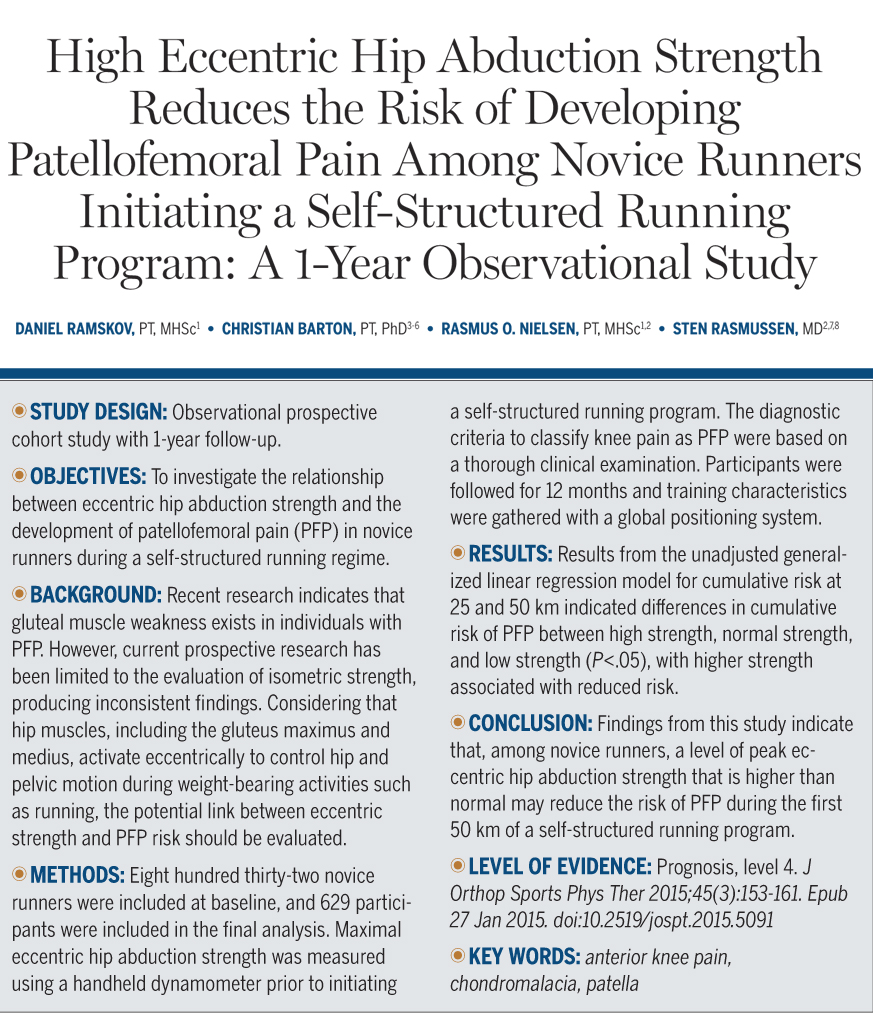New Article Published in JOSPT
Daniel Ramskov, Christian Barton, Rasmus Nielsen and Sten Rasmussen have published a new article entitled "High Eccentric Hip Abduction Strength Reduces the Risk of Developing Patellofemoral Pain Among Novice Runners Initiating a Self-Structured Running Program: A 1-Year Observational Study."

Abstract:
Study Design: Observational prospective cohort study with 1-year follow-up.
Objectives: To investigate the relationship between eccentric hip abduction strength and the development of patellofemoral pain (PFP) in novice runners, during a self-structured running regime.
Background: Recent research indicates gluteal muscle weakness in individuals with PFP. However, current prospective research is limited to evaluation of isometric strength, producing inconsistent findings. Considering hip muscles including gluteus maximus and medius activate eccentrically to control hip and pelvic motion during weight-bearing activities such as running, evaluating the potential link between eccentric strength and PFP risk is needed.
Methods: 832 novice runners were included at baseline and 629 participants were included in the final analysis. Maximal eccentric hip abduction strength was measured using a handheld dynamometer prior to initiating a self-structured running program. The diagnostic criteria to classify knee pain as PFP were based on a thorough clinical examination. Participants were followed for 12 months and training characteristics was gathered with a Global Positioning System (GPS).
Results Results from the unadjusted generalized linear regression model for the cumulative risk at 25 and 50 kilometres indicated differences in cumulative risk of PFP between high strength, normal strength, and low strength (P< 05), with higher strength associated with reduced risk.
Conclusion: Findings from this study indicate that among novice runners a level of peak eccentric hip abduction strength higher than normal reduces the risk of PFP during the first 50 kilometres of a self-structured running program.
